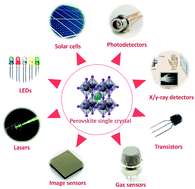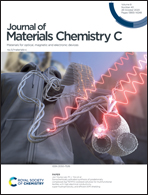Growth and optimization of hybrid perovskite single crystals for optoelectronics/electronics and sensing
Abstract
Organic–inorganic hybrid perovskites, which combine the advantages of superior optical and electronic properties and solution-processed manufacturing, have emerged as a new class of revolutionary optoelectronic devices with the potential for various practical applications. Encouraged by the advantages of longer carrier diffusion length, higher carrier mobility and potential for better optoelectronic properties than their polycrystalline counterparts, increasing research attention has focused on the preparation and optimization of single crystal candidates, using various solution synthesis techniques to control the morphology, for the development of a wide range of optoelectronic applications. This paper presents a comprehensive review of recent advances in the field of optoelectronic and sensing technologies based on different forms of single crystals, including bulk crystals and thin samples, with an emphasis placed on the optimization of the crystals and the relationship among the charge-carrier transport, operation mechanism, device architecture, and device performance. First, we present the main methods used to prepare bulk and thin single crystals and analyze several aspects of their properties. Thereafter, the applications of single crystals in solar cells, photodetectors, light-emitting diodes, lasers, as well as sensors and transistors, are discussed in depth. Finally, we summarize the merits and demerits of perovskite single crystals and propose further improvements in the synthesis approaches and device applications.

- This article is part of the themed collection: Journal of Materials Chemistry C Recent Review Articles


 Please wait while we load your content...
Please wait while we load your content...